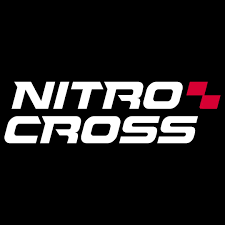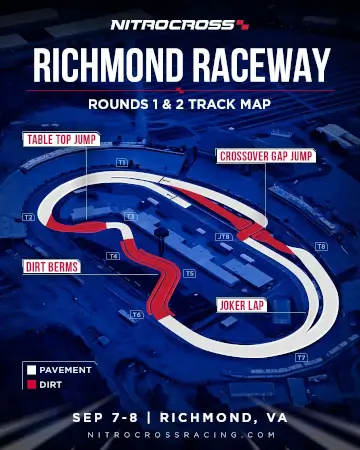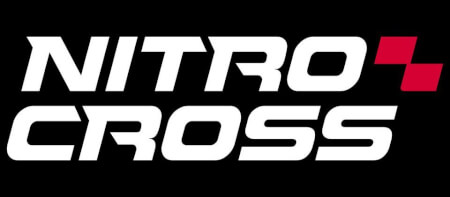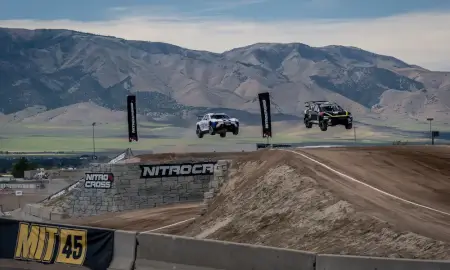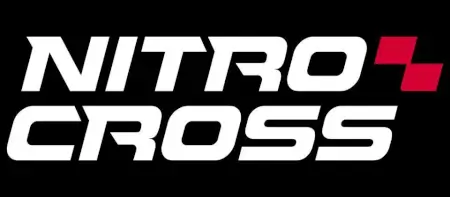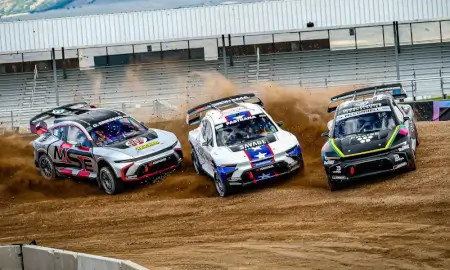June 19th 2024
Nitrocross reveals cost containment plan to elevate development class
Nitrocross is launching a new scheme aimed at making its top development class more accessible.
From the coming season, which begins in Richmond, VA in September, the NEXT class will be known as NEXT evo following the introduction of the new FC2 single-make platform, developed by First Corner – a branch of Sweden’s ultrasuccessful Olsbergs MSE rallycross outfit.
Evolved from the class’ previous SuperCar Lites machine which has been in service since 2013 (when the U.S. premier rallycross series was Global Rallycross), the new FC2 promises a jump in horsepower from around 320 to 480 horsepower – plus an additional 70 bhp with the use of a limited-use ‘Nitro Boost’ function – and on-track performance comparable to the old 600 bhp Supercars that have been phased out in recent seasons.
Now, the series is offering a unique scheme, dubbed the Cost Contained Racing Plan, to not only contain costs but allow drivers to focus entirely on driving.
Contained at a base cost of $40,000 per weekend – each of which will be a doubleheader comprising two full championship rounds – the plan includes access to a fully-prepared car, a new set of Yokohama racing tires, a drum of P1 Bio 100 fuel – the category’s control fuel which is 100 percent fossil-free – and two team members to run the car. Driver registration and entry fees are also included as are the racing car’s logistics to and from events.
“The idea was $40,000 is everything you need to put it on the podium,” Nitrocross general manager Chip Pankow told RACER. “What it’s doing is leveling the market a little bit.
“Our whole ethos in Nitrocross, whether it be in Group E, or particularly NEXT evo, is we want to control costs, and this is a way to provide a fair market for drivers coming into NEXT evo.”
While a lot of the talk around the new FC2 has centered around its performance putting it almost on-par with the old premier class Supercar vehicles, weekend running costs are comparable to the outgoing Lites car, but considerably lower than Supercars.
“It’s a little lower horsepower than an old Supercar but they’re lighter, they put power down better than an old Supercar,” said Pankow. “So it’s a Supercar experience for $40,000 a weekend. If we were still running Supercars, they’d cost more than Group E (understood to be little under double the cost of running an FC2 for a doubleheader weekend). Those engines were tearing themselves apart and they were crashing so expensively.”
NEXT evo, however, is still effectively a developmental class for emerging drivers, and Group E driver Conner Martell – a Lites veteran who sampled the FC2 recently in Sweden – insists it’ll still be an accessible platform despite the notable rise in performance.
“The nice thing is that it’s very easy to drive,” he said. “It kind of throttle-steered itself which is nice because the Lites car always had a lot of understeer so you’re always trying to fight setup, and the Lites car always felt like you could never get the power you wanted, you could never slide the car around.
“This car allows you to play around with that and feel it, but it is at a very high horsepower with anti-lag.”
“With the power you can get the car rotated and have the power through the turn whereas the Lites car, you never had that, ” he added, also noting the car’s new shocks and bigger suspension. “You were always much slower when you had a slide, whereas now you can position the car and not lose as much time and it will help you in the turns.”
Martell also feels that it’ll be manageable for those making the leap up from Side-by-Sides and the new Sierra Car class, which will also debut in September, even if the speed might take a bit of adjustment at first.
“It’s definitely a big jump, I think the hardest thing will be the speed difference and the anti-lag,” he said. “I think the hardest thing will be the speed and being timid with how much speed you’re going to have now. With anti-lag you get a little more push from the car, the throttle is much touchier, but the car drives easy.
“The chassis is very well done, you can get it to do whatever you want, and it’s small and nimble, so if you do make a mistake, it’s pretty easy to fix it.”
A minimum of 12 cars are already set to run in NEXT evo come September, but teams are said to already be planning to expand their orders with driver interest for U.S. rallycross’ second-tier competition at an all-time high.
For more information: www.racer.com
For more Industry News, please Click Here
For more information: www.racer.com
For more Industry News, please Click Here
